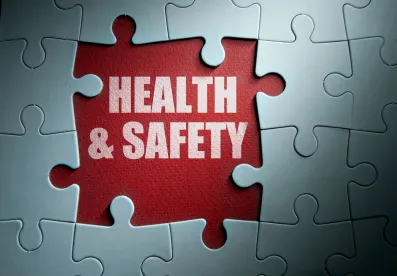Health care employers must heed the growing concern in their workforces about the risk of job-related violence. The Occupational Safety and Health Administration (“OSHA”) has gathered statistics showing that health care workers are subjected to a high rate of workplace violence. See Guidelines for Preventing Workplace Violence for Healthcare and Social Services Workers (“Guidelines”) at pp. 2-3.
While extensive, the Guidelines are, as OSHA recognizes, not a standard or regulation. However, in the preamble to the Guidelines, OSHA points out that the Occupational Safety and Health Act’s (“OSH Act’s”) general duty clause, Section 5(a)(1), “requires employers to provide their workers with a workplace free from recognized hazards that are causing or likely to cause death or serious physical harm.”
Recently, the Occupational Safety and Health Review Commission (“Commission”) found that a social services provider had violated the general duty clause after a mentally ill client fatally stabbed one of its employees. Sec. of Labor v. Integra Health Management, Inc., OSH RC Docket No. 13-1124 (March 2019). The Commission rejected the provider’s argument that the unpredictable violent conduct of a third party is not a workplace hazard under the OSH Act, reasoning that “the hazard arises from the employment itself.”
Health care employers should also be aware that unions representing health care workers are increasingly raising the workplace violence issue in negotiations and are seeking creation of, and active participation in, workplace safety committees. Health care employers with non-union workforces should be alert to the possibility that serious incidents of workplace violence could become a rallying cry to support union organizing campaigns, especially in the absence of effective policies addressing this issue.
Health care facilities should adopt “feasible and effective” means to reduce the chances of violent assaults in their facilities. This should be done with a multidisciplinary approach that includes security, human resources, appropriate medical professionals, and risk management. The goal is to develop, maintain, and enforce policies and procedures:
-
prohibiting violence/harassment in the workplace;
-
providing systems for employees to promptly report incidents of violence and threats of violence while protecting patient confidentiality under the Health Insurance Portability and Accountability Act of 1996 (or “HIPAA”);
-
requiring immediate investigation of all incidents or threats of violence reported, and taking appropriate corrective action;
-
determining the potential hazards in the individual workplace, and implementing appropriate changes; and
-
reviewing workplace violence incidents with the goal of ascertaining contributing factors, and adjusting policies and procedures to minimize similar incidents in the future.




 />i
/>i

